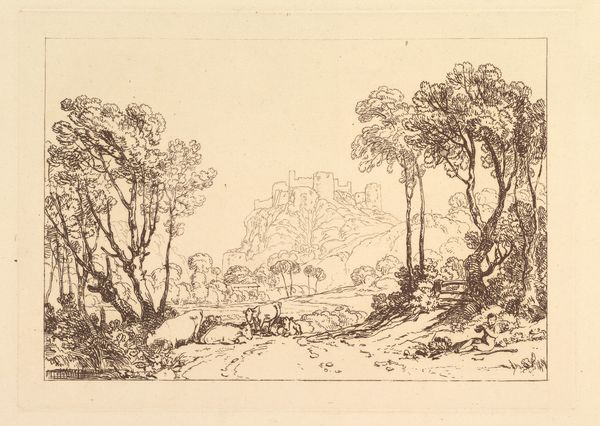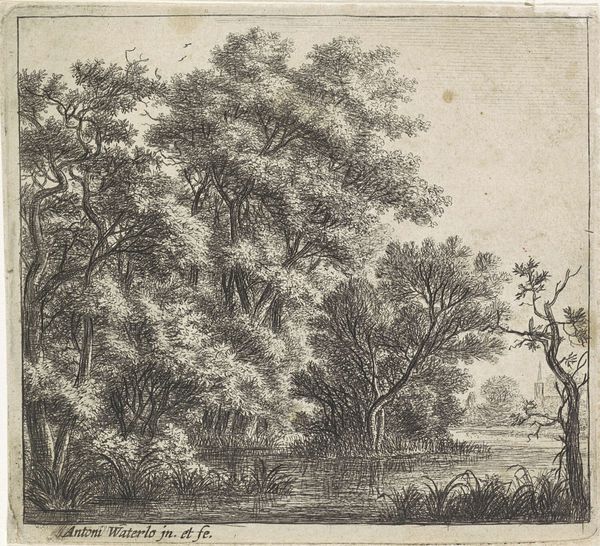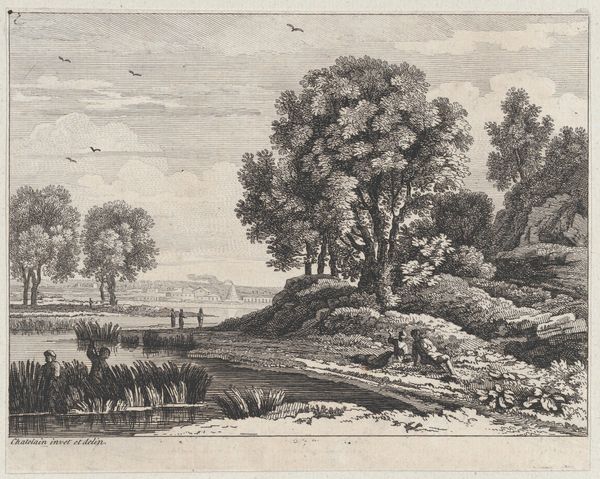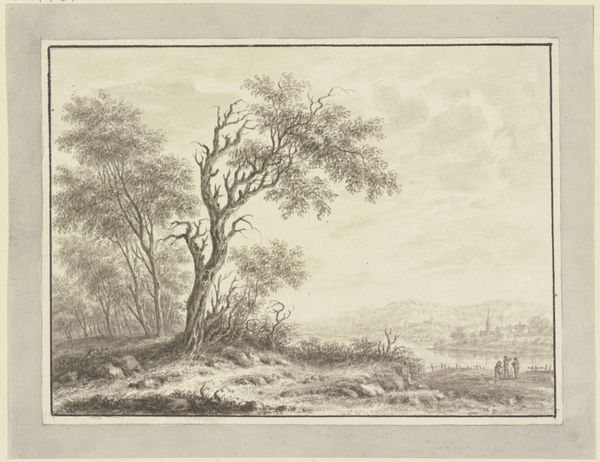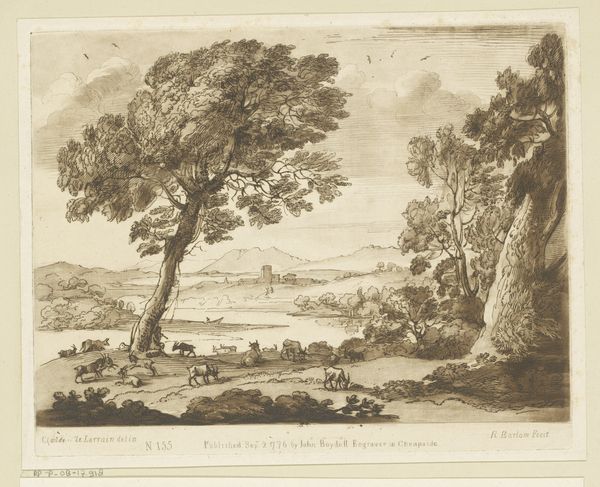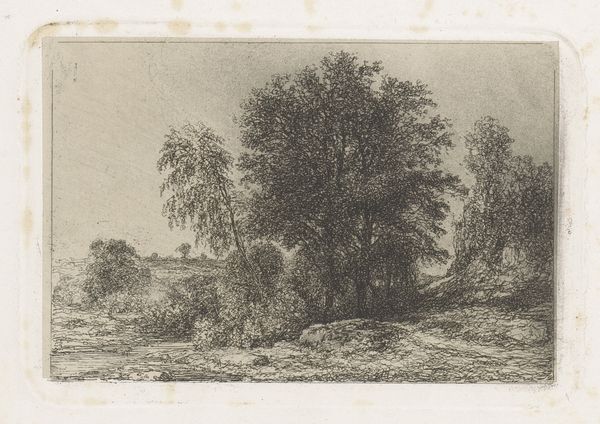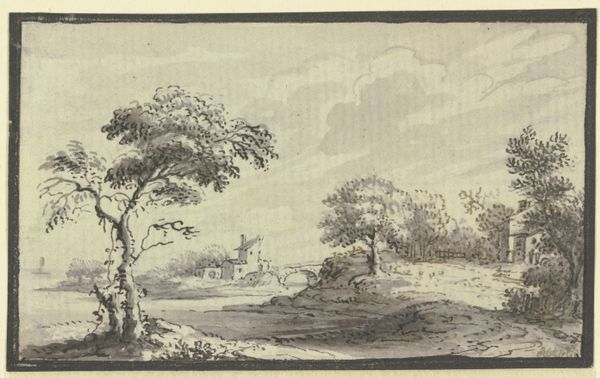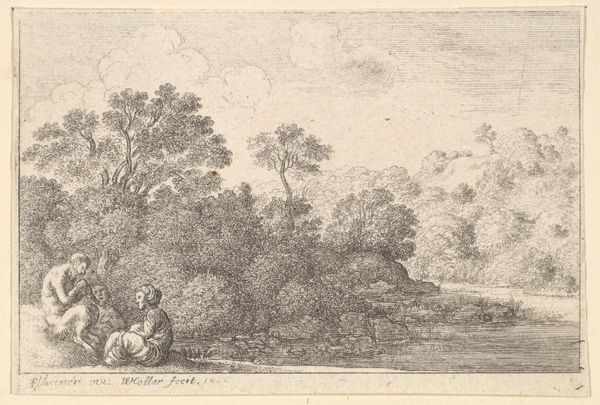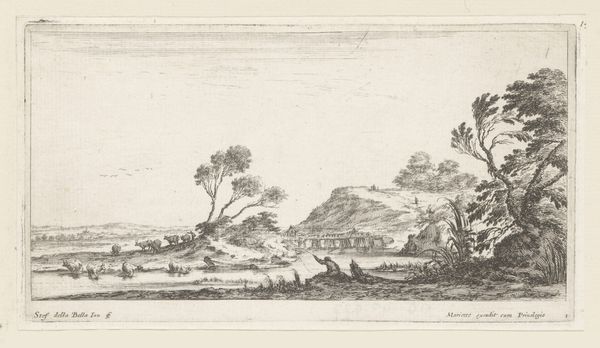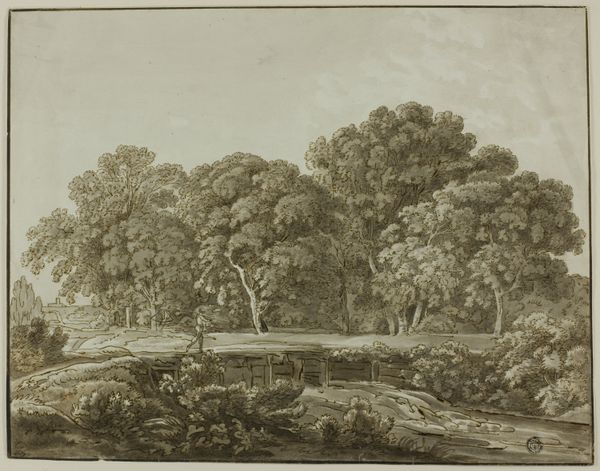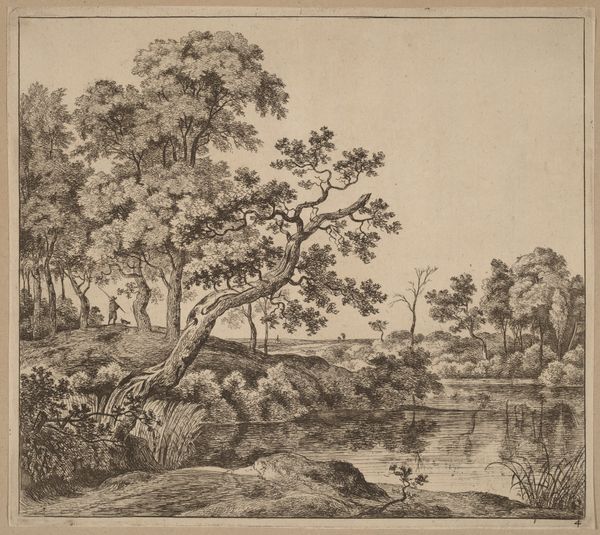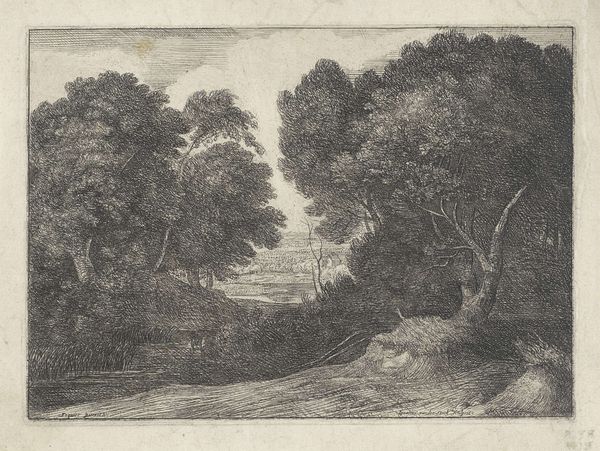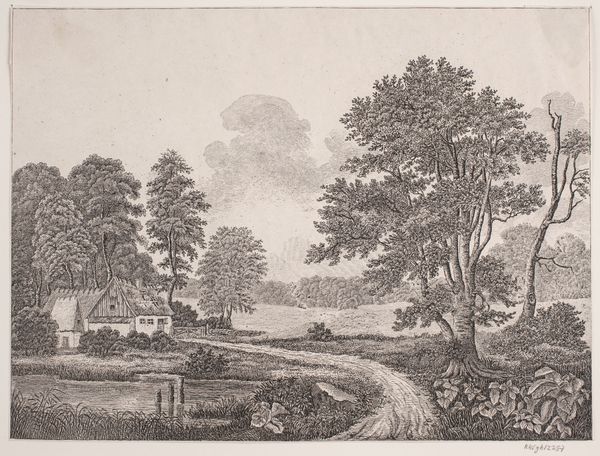
drawing, print, etching, engraving
#
tree
#
drawing
# print
#
etching
#
landscape
#
line
#
engraving
Dimensions: Sheet (Trimmed): 4 3/16 × 6 7/16 in. (10.7 × 16.3 cm)
Copyright: Public Domain
Editor: We are looking at "Landscape," an etching and engraving by Jean-Baptiste-Claude Chatelain, dating from about 1725 to 1763. The monochromatic palette and delicate lines create such a tranquil, almost dreamlike atmosphere. What stands out to you? Curator: The use of line, of course, is paramount. Notice how the artist employs varying densities of hatching and cross-hatching, not just to depict light and shadow, but also to define the very textures of the trees and the distant architectural structures. Editor: It’s fascinating how those simple lines evoke such detail! Curator: Indeed. The composition also merits consideration. The strong verticals of the trees create a sense of stability. Yet, contrast this with the subtle recession into space, guided by the diminishing scale of the buildings. Do you see how that linearity directs our gaze? Editor: Absolutely. The lines almost seem to choreograph the viewer's eye through the landscape. It feels balanced, yet with an intentional asymmetry. Curator: Precisely. This delicate balancing act demonstrates the artist's sophisticated manipulation of formal elements. One must also consider the negative space...Observe how it both defines and enhances the represented forms. Do you agree? Editor: I do. It makes the work breathe, prevents it from feeling cramped despite all the fine detail. Curator: Yes, it allows for an almost lyrical reading of the artwork. Overall, through analyzing the intrinsic visual elements we get an elevated appreciation for Chatelain's printmaking skills. Editor: I agree. Focusing on the line work, composition, and form has really enriched my understanding of the image and allowed me to see so much that I didn't notice at first.
Comments
No comments
Be the first to comment and join the conversation on the ultimate creative platform.
